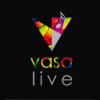
Sound healing therapy uses parts of music to help improve physical and emotional health. The different types of music therapies present are:
- Listening to music
- Singing along to a song
- Moving/ Dancing to the beat of the music
- Meditating
- Playing an instrument
Music has been used throughout history for its properties to cure mental disorders. Music has been used to boost morale in military troops, help people work faster and more productively, and even ward off evil spirits by chanting. In the recent years, research has shown music has been linked to lot of health benefits, from boosting immune function and lowering stress levels to improving the health of premature babies.
There are various types of sound therapy, each having their own benefits
1) Guided meditation is a form of sound healing in which you meditate to voiced instruction, either in a session or class, or using a video or app. Meditation can involve chanting or repeating mantras or prayers.
The benefits found through this type of meditation, includes:
- Stress reduction
- Decreased anxiety and depression
- Improved memory
- Reduced blood pressure
- Pain reduction
- Lower cholesterol
- Decreased risk of heart disease and stroke
2) Neurologic music therapy
Music therapy has been known to reduce stress and promote relaxation. This form of therapy is proven to be more effective than prescription drugs in reducing anxiety levels before surgery.
A study published in 2017 found that a 30-minute music therapy session combined with traditional care after spinal surgery reduced pain. A credentialed provider who assesses the individual’s needs prior or post surgery administers music therapy. Treatment involves creating, listening, singing, or moving to music, which is also used for physical rehab, pain management, and brain injuries.
Bonny Method is named after Helen L. Bonny, PhD, where classical music and imagery is used to explore personal growth, consciousness, and transformation.
Study has showed promising evidence that a series of GIM (Bonny Method) sessions could improve psychological and physiological health in adults with medical and mental health needs.
Nordoff-Robbins is method which is delivered by skilled musicians who complete the Nordoff-Robbins 2-year master’s program. They use music familiar to those being treated, create new music together, or work toward a performance. This method is used to treat children with developmental delays (as well as their parents), mental health issues, learning difficulties, autism spectrum disorder, dementia, and other conditions.
Tuning fork therapy uses calibrated metal tuning forks to apply specific vibrations to different parts of the body. This helps release tension, energy, and promotes emotional balance. It supposedly works similarly to acupuncture, using sound frequencies for point stimulation instead of needles. Research also suggests that the tuning fork therapy helps relieve muscle and bone pain.
Brainwave entrainment is also known as binaural beats. The method helps stimulate the brain into a specific state using pulsing sound to encourage your brain waves to align to the frequency of the beat. This method helps induce enhanced focus, entranced state, relaxation, and sleep.
Music therapy is used to treat numerous symptoms:
- Anxiety disorders
- Depression
- Post-traumatic stress disorder
- Dementia
- Autism spectrum disorder and learning difficulties
- Behavioral and psychiatric disorders
- Cancer
Some of the supposed benefits of music therapy include:
- Lowers stress
- Decreases mood swings
- Lowers blood pressure
- Lowers cholesterol levels
- Teaches pain management
- Lowers risk for coronary artery disease and stroke
- Improves sleep
Music therapy uses different aspects of sound to improve your emotional and physical well-being. The ways in which the music therapy works depends on the method being used and the reason for which it is being used. Most music therapy sessions are experienced one-on-one with a specially trained practitioner, which may involve the patient to sit or sleep while listening to the music either from a speaker or instrument. Based on the method being used, participation is encouraged by singing, dancing or by even playing a musical instrument.
The instruments used in music therapy are:
- Singing bowls
- Tuning forks
- Pan flute
- Harp
- Drums
- Piano
- Guitar
- Violin
- Saxophone
Music therapy has been found to be effective for stress reduction and relaxation and has been shown to offer many health benefits. So one should pick up an instrument and learn to help oneself and others.

I am very enjoyed for this blog. Is an informative topic. It help me very much to solve some problems. Its opportunity are so fantastic and working style so speedy. I think it may be help all of you. Thanks a lot for enjoying this beauty blog with me. I am appreciating it very much! Looking forward to another great blog. Good luck to the author! all the best